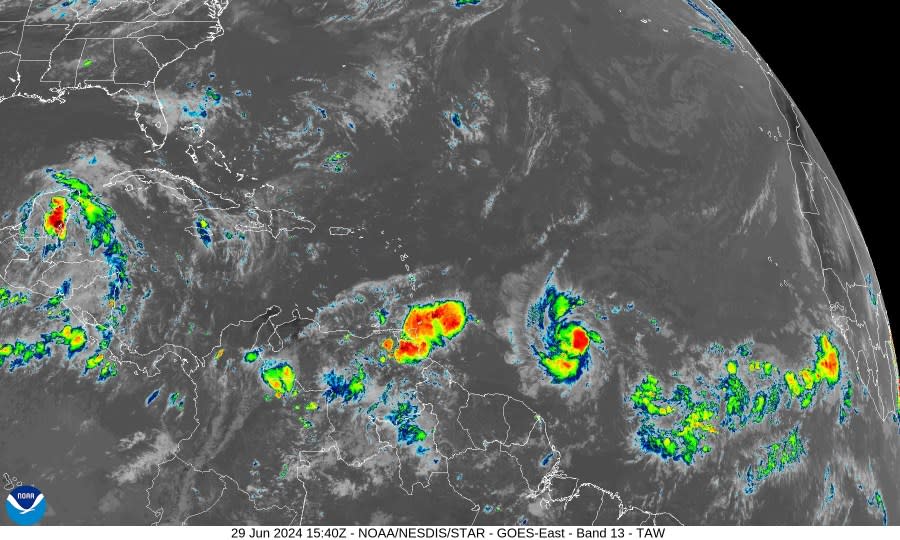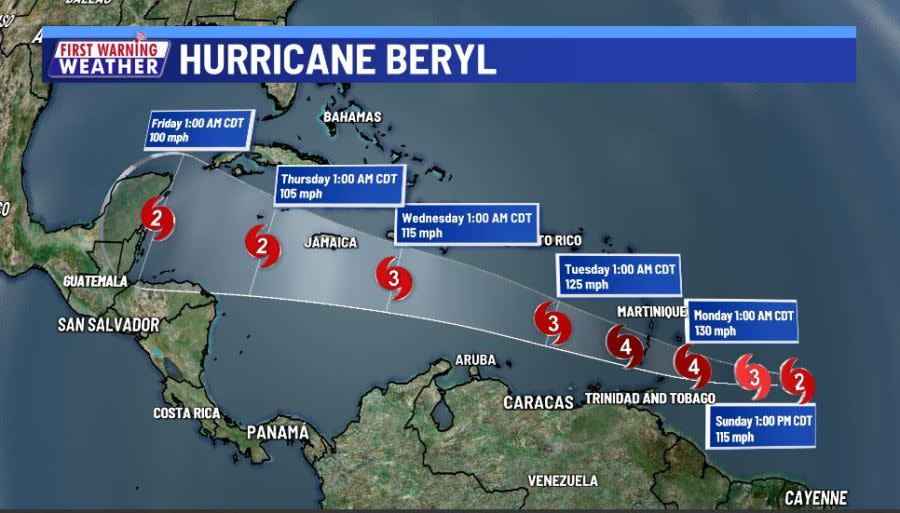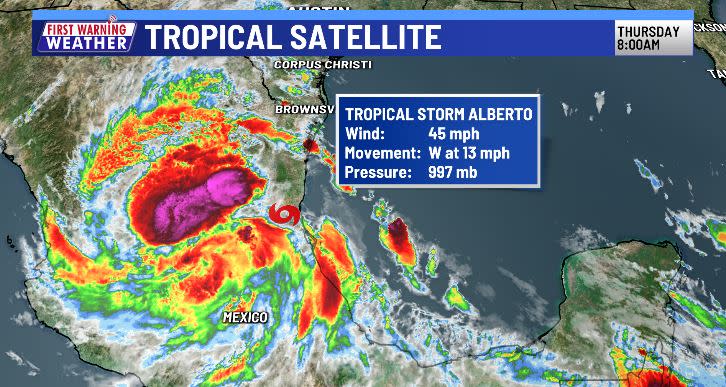Tropical tracker: Timeline of storms in the 2024 Atlantic hurricane season

Editor’s Note: The video above shows the latest from the KXAN First Warning Weather team.
AUSTIN (KXAN) — Each year, the Atlantic hurricane season officially runs from June 1 through Nov. 30.
This year is expected to be very active, with the National Oceanic and Atmospheric Administration (NOAA) predicting an 85% chance of an above-average season.
NOAA is forecasting 17-25 named storms, 8-13 of which are predicted to become hurricanes. Of those, 4-7 are projected to become major hurricanes of Category 3 or higher.
Hurricane history: How many storms have made landfall in Texas?
Follow along as we track each storm throughout hurricane season.
Hurricane Beryl

June 28, 4 p.m.: Tropical Depression Two formed about 1,225 miles east-southeast of Barbados. The storm had maximum sustained winds of 35 mph and was moving west at 21 mph.
June 28, 10 p.m.: Tropical Depression Two strengthened into Tropical Storm Beryl about 1,110 miles east-southeast of Barbados. Beryl had maximum sustained winds of 40 mph and was moving west at 18 mph.
June 29, 10 a.m.: Tropical Storm Beryl has maximum sustained winds of 65 mph. The storm will become a hurricane later this afternoon or early tonight. It is racing to the west at 23 mph. Present forecasts point to this becoming a major hurricane (Category 3) late Sunday night/Monday morning.
June 29, 4 p.m.: Tropical Storm Beryl has strengthened into Hurricane Beryl about 720 miles east-southeast of Barbados. Beryl had maximum sustained winds of 75 mph and was moving west at 22 mph.
June 29, 7 p.m.: Hurricane Beryl is located 660 miles east-southeast of Barbados. Beryl has maximum sustained winds of 80 mph and is moving west at 22 mph.
June 29, 10 p.m.: Hurricane Beryl is located 595 miles east-southeast of Barbados. Beryl has maximum sustained winds of 85 mph and is moving west at 20 mph.
June 30, 4 a.m.: Hurricane Beryl’s has reached Category 2 strength with maximum sustained winds are up to 100 mph. The hurricane is 530 miles east-southeast of Barbados moving west at 20 mph. Hurricane warnings are posted for Barbados, Grenada, St. Lucia, and St. Vincent and the Grenadines
Tropical Storm Alberto

June 19, 10 a.m.: Tropical Storm Alberto formed in the western Gulf of Mexico, about 185 miles east of Tampico, Mexico, or 295 miles south-southeast of Brownsville, Texas. Alberto had maximum sustained winds of 40 mph. The storm was moving west at 9 mph.
June 19, 10 p.m.: Tropical Storm Alberto reached its maximum intensity, with 50 mph winds.
June 20, 7 a.m.: Tropical Storm Alberto made landfall near Tampico, Mexico.
June 20, 10 a.m.: Tropical Storm Alberto was downgraded to a tropical depression with maximum sustained winds of 35 mph. The storm was located 95 miles west of Tampico, Mexico, moving west at 18 mph.
June 20, 4 p.m.: Tropical Depression Alberto dissipated about 260 miles west of Tampico, Mexico.
Copyright 2024 Nexstar Media, Inc. All rights reserved. This material may not be published, broadcast, rewritten, or redistributed.
For the latest news, weather, sports, and streaming video, head to KXAN Austin.

